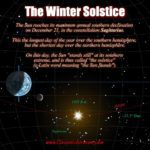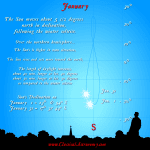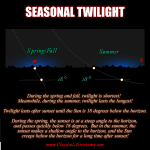Winter Solstice

WINTER SOLSTICE: Everybody knows that December 21 is the shortest day of the year but not many people know why. The Sun reaches its maximum southern declination of the year. For those of us in the northern hemisphere, that means the noon Sun is lowest in the sky of any date of the year. From latitude 40 degrees north (New… Continue reading





